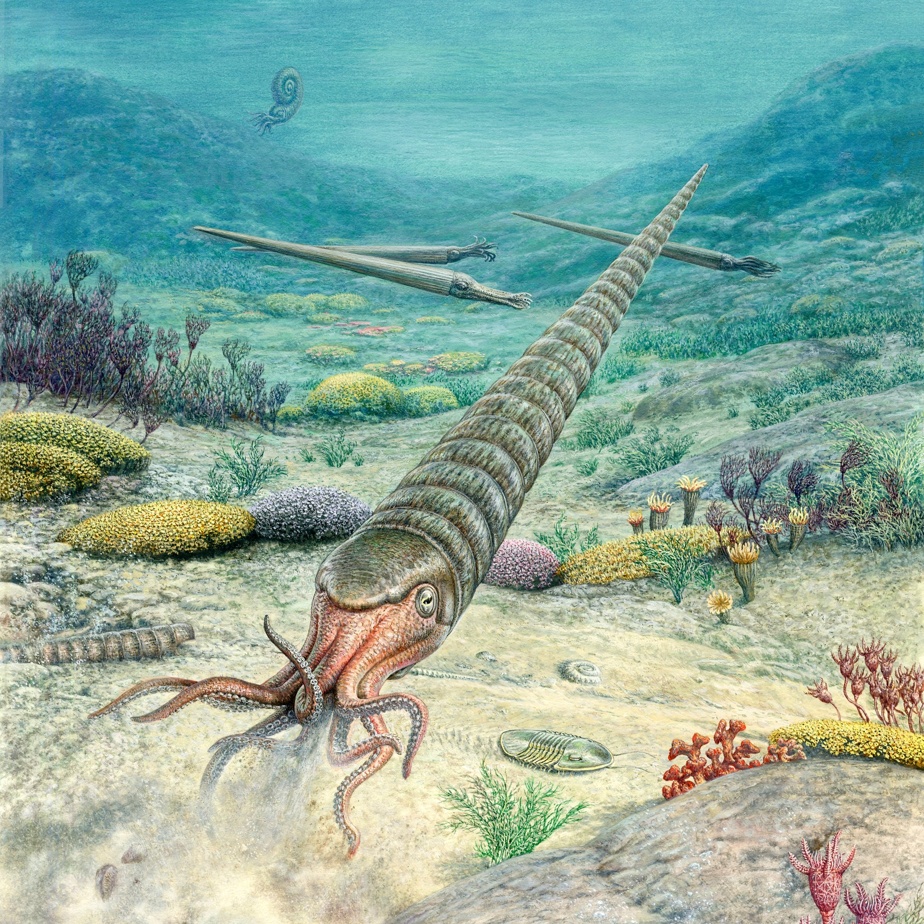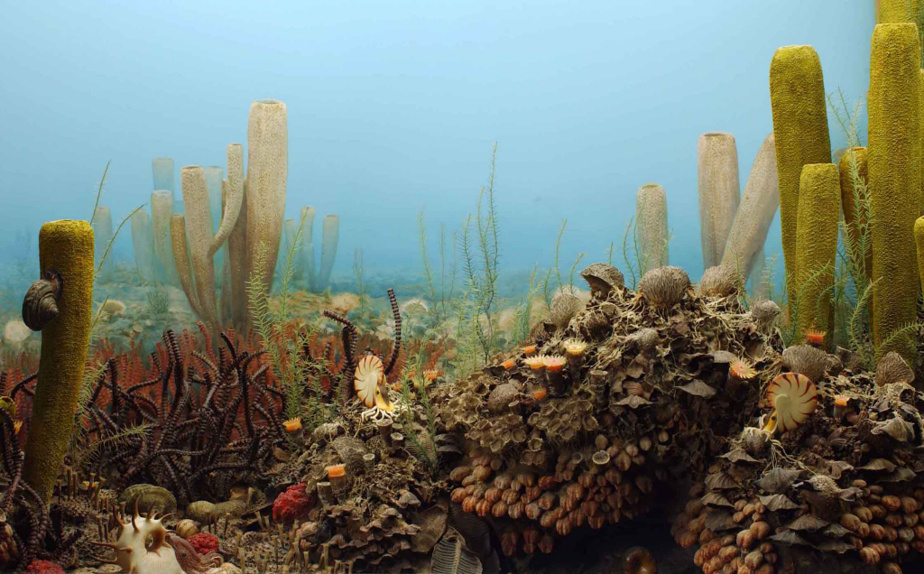Posted at 7:00 a.m.
the pioneer
Are we in the middle of a 6and extinction ? This is the question posed in 2008, in the review PNAS, herpetologist Vance Vredenburg of San Francisco State University. “I think we were among the first to use those words, certainly in a scientific journal,” Vredenburg said today. Since then, evidence of the rapidity of current extinctions has continued to accumulate. But the question remains unresolved. »

PHOTO RICH PEDRONCELLI, ASSOCIATED PRESS ARCHIVES
San Francisco State University herpetologist Vance Vredenburg
On the one hand, we have mass extinctions with the disappearance of more than 75% of species in a few tens or hundreds of thousands of years, explains the frog specialist. On the other hand, we have the extinction of 10% to 20% of species in a few centuries, so much more quickly. “We can consider this rapidity to be a sign of an inevitable process, but we have no evidence that the five mass extinctions had a similar start. Personally, I would add that advances in synthetic biology and conservation programs are also changing the game. »
Mr. Vredenburg gives as an example the increase in the population of several species of whale, as well as the improvement, thanks to biotechnology, of the genetic diversity in the populations of American ferrets. “If we abandon our efforts, we will have a 6and extinction, says the Californian biologist. But we can probably avoid it. »
The climate
Climate change is, for many, the tipping point that will make the 6and inexorable extinction. “We emit 100 times more CO2 than volcanoes”, notes Elizabeth Kolbert, journalist for the New Yorker who published in 2014 the book The 6th extinctionat Guy Saint-Jean Publisher.
-

PHOTO FROM THE NEW YORKER SITE
Elizabeth Kolbert, journalist for the New Yorker who published in 2014 the book The 6th extinction
-

IMAGE PROVIDED BY GUY SAINT-JEAN EDITOR
The 6th extinction
-

IMAGE PROVIDED BY BUCHET-CHASTEL
fish in the desert
1/3
Mme Kolbert has just published the sequel, fish in the desert, published by Buchet-Chastel, which covers around ten technological programs for the protection of biodiversity and the fight against climate change. “We have taken control of geology and the carbon cycle. The current human impact on biodiversity is just a glimpse of what is to come. »
Michael Hannah, New Zealand biologist who just published the book Extinctions, at Cambridge University Press, points out that with each of the five mass extinctions that the planet has known for 500 million years, the climate has been disrupted. “Greenhouse gas emissions need to be tackled for several reasons, but avoiding mass extinction is one of the most important. »
Earth and sea
So far, most extinctions have occurred on land, especially on islands with rare species that cannot migrate. However, traces of the other five mass extinctions have been found in marine sediments. Some biologists therefore think that we cannot speak of 6and extinction as long as there is no signal of accelerated loss of marine biodiversity, according to Douglas McCauley, biologist at the University of California at Santa Barbara, specialist in the protection of large marine mammals.

PHOTO FROM THE UNIVERSITY OF SANTA BARBARA WEBSITE
Douglas McCauley, biologist at the University of California at Santa Barbara, specialist in the protection of large marine mammals
“Others think that terrestrial extinctions are the canary in the mine and herald what is to come in the seas. Honestly, it’s too early to tell, but there are plenty of reasons to protect marine biodiversity. It is also certain that if the planet warms up a lot, the oceans will change a lot and will become more acidic, which will have an effect on shellfish species. McCauley published a study in 2016 comparing the current marine extinction to that of the five great extinctions. It showed that unlike the five great extinctions, the marine species currently most affected are the largest.
Invasive species
Another part of the debate concerns invasive species, which are more numerous than ever due to trade facilitating the transfer of species and climate change. These invasive species often cause the disappearance of competing native species. But some biologists argue that in many cases, they are better adapted to ecosystems and therefore make them stronger. And that in any case, it is possible to fight against problematic invasive species, as New Zealand does against rats.

PHOTO FROM THE SORBONNE WEBSITE
Philippe Bouchet, biologist at the Sorbonne
“Yes, we can consider that there is a debate on the level of the overall effect of invasive species on ecosystems, but that does not prevent us from having to worry about it”, estimates Philippe Bouchet, biologist at the Sorbonne. He has just published in the journal Current Biology an indictment in favor of the recognition of the real risk of a 6and extinction. “If I can make a comparison, linguists deplore the loss of marginal languages spoken by a few hundred people. So we have to fight against the disappearance of rare species. At the very least, according to Mr. Bouchet, the genetics of as many species as possible must be documented, much like we do salvage archeology to document the sites that will be destroyed by the construction of a dam or of a highway. “Biodiversity needs to be archived,” says Bouchet.
“Defaunation”
Even if we don’t worry about a 6and extinction, we must be alarmed by “defaunation”, a concept describing the loss of a large number of individuals of a species. “We have a great decrease in the median bioabundance of species”, explains Alexander Lees, a biologist at Manchester Metropolitan University, who fights on scientific forums against “extinction denial”.

PHOTO FROM ALEXANDER LEES TWITTER ACCOUNT
Alexander Lees, biologist at Manchester Metropolitan University
“We have a lot of animals on earth, but most of them are agricultural species. Insect populations, for example, are collapsing. We are not talking about the risk of extinction, but there is a problem of functional biodiversity. It takes a certain number of individuals for a species to fulfill its role in ecosystems. According to this concept, you can have a mass extinction without having the total disappearance of several species, because “functional extinctions” will make entire ecosystems disappear.
-

PHOTO FROM VICTORIA UNIVERSITY WEBSITE
Michael Hannah, New Zealand biologist who just published the book Extinctions
-

IMAGE PROVIDED BY CAMBRIDGE UNIVERSITY PRESS
Extinctions
1/2
The history of extinctions
Michael Hannah, author of the book Extinctionsdon’t like to talk about 6and extinction, even if he is convinced that we are heading towards a mass extinction. “Yes, there have been five mass extinctions, but there have also been four other extinctions with the disappearance of more than half of the species, and a dozen other major extinctions. Each of these 19 extinctions has changed the face of the Earth more than we have done so far. I don’t think we can be satisfied to be the 20and great extinction rather than the 6and mass extinction. »

PHOTO FROM THE UNIVERSITY OF CHICAGO WEBSITE
American paleontologists David Raup and Jack Sepkoski
For the record, the five mass extinctions were identified in the 1970s and 1980s by American paleontologists David Raup and Jack Sepkoski. “They pulled together all the available fossil data to show these five peaks in the rate of extinctions,” says Daniele Luigi Pinti, a biologist at the University of Quebec in Montreal (UQAM). “It was a huge undertaking at the time. »

PHOTO WIKIMEDIA COMMONS
French anatomist Georges Cuvier
Now deceased, Raup and Sepkoski also floated the idea that major extinctions occur every 26 million years, possibly due to an unknown solar cycle. “This cyclicity of extinctions has really not been demonstrated, but studies come out on the subject regularly, I have just seen one pass”, says Mr. Pinti. The Montreal biologist notes that due to a lack of fossils, we do not know when the mass extinctions took place before 500 million years ago. The idea that a species can become extinct was first proposed in 1796 by French anatomist Georges Cuvier about mammoths – at the time they were presumed to survive in the American West.
Mass extinctions over time

PHOTO FROM HARVARD UNIVERSITY WEBSITE
Artist’s impression of life before the late Ordovician mass extinction
445 million years ago: Ordovician extinction; cause: significant variations in sea level due to movements of the Gondwana supercontinent; 85% of species disappear.

PHOTO FROM THE SITE OF THE AMERICAN MUSEUM OF NATURAL HISTORY
Artist’s impression of life before the late Devonian mass extinction
370 million years ago: Devonian extinction; cause: sudden drop in oxygen levels in the oceans, perhaps due to a supernova or exacerbated volcanism; 83% of species disappear.

PHOTO FROM THE SITE OF THE AMERICAN MUSEUM OF NATURAL HISTORY
Artist’s impression of life before the late Permian mass extinction
252 million years ago: Permian extinction; cause: increase in greenhouse gases due to volcanism or asteroids; 95% of species disappear.

PHOTO FROM UNIVERSITY OF BERKELEY WEBSITE
Artist’s impression of life before the late Triassic mass extinction
201 million years ago: Triassic extinction; cause: asteroids and significant variations in sea level due to movements of the supercontinent Gondwana; 80% of species disappear.

PHOTO FROM HARVARD UNIVERSITY WEBSITE
Artist’s impression of the meteorite that caused the end of the dinosaurs 66 million years ago
66 million years ago: Cretaceous extinctions; cause: asteroid having caused an abnormal volcanism (it is the only mass extinction whose cause is almost certain); 76% of species disappear.
Source : Extinctionsby Michael Hannah, Cambridge University Press
Learn more
-
- 50 million years
- Time needed for enough new bird species to appear to compensate for island species that have disappeared due to human colonization
SOURCE : Current Biology
-
- From 100 to 1000 times faster
- Current rate of extinction compared to long-term rate of extinction
SOURCE : Extinctionsby Michael Hannah, Cambridge University Press
-
- 5%
- Proportion of species loss that is due to the five mass extinctions. The rest of the extinctions are attributable to the fourteen other great extinctions and the normal extinctions.
SOURCE : Extinctionsby Michael Hannah, Cambridge University Press

